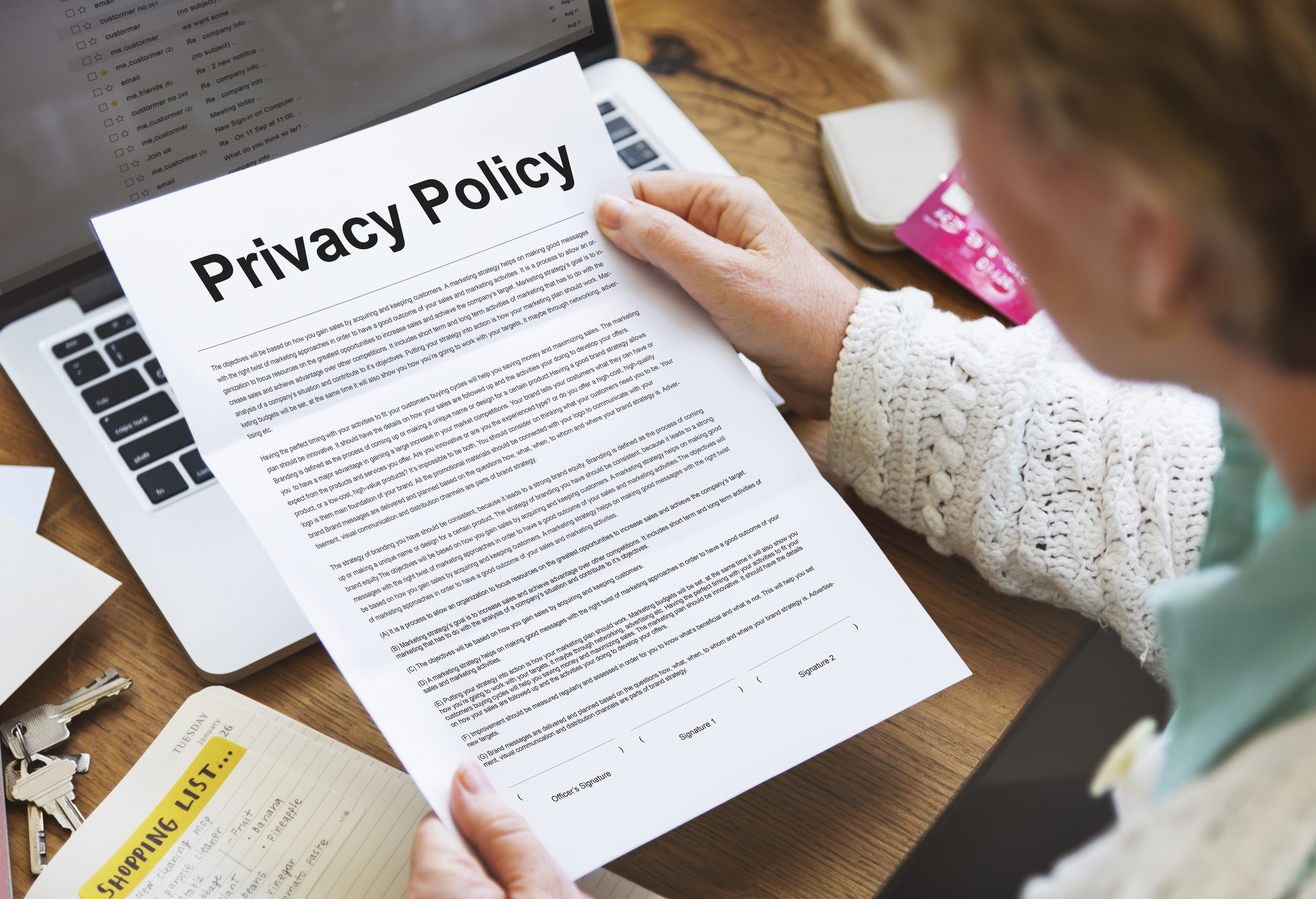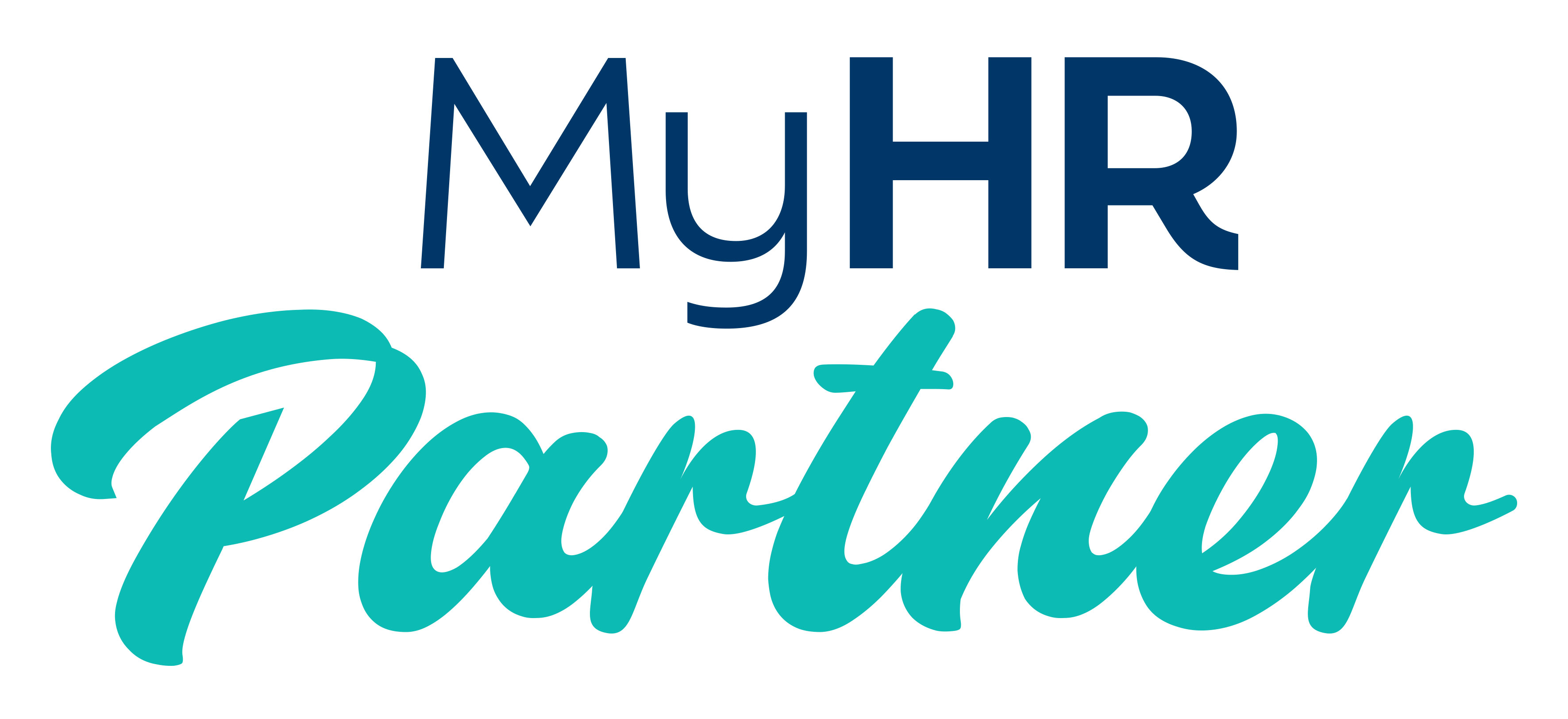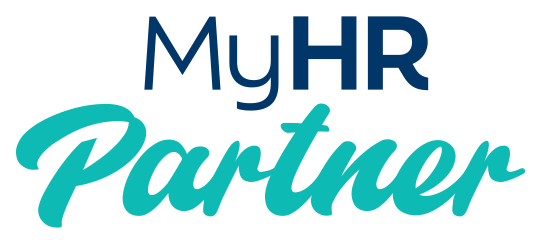Privacy Policy
Privacy Policy

Who We Are
Our website address is: https://booking.myhrpartner.com.au/home
My HR Partner Privacy Policy
Last Modified: November 2022
We at My HR Partner (My HR Partner and our affiliates) are committed to protecting your privacy.
This Privacy Policy applies to the information and data collected by My HR Partner, including the information collected
on our website or through other channels as described below. It also describes your choices regarding use, access
and correction of your personal information.
We periodically update this Privacy Policy and will post any and all privacy policy changes here.
If you have any questions about this Privacy Policy or our treatment of the information you provide us,
please email us at [email protected]
We at My HR Partner (My HR Partner
and our affiliates) are committed to protecting your privacy. This Privacy Policy applies to the information and data collected by My HR Partner, including the information collected on our website or through other channels as described
below. It also describes your choices
regarding use, access and correction
of your personal information.
We periodically update this Privacy Policy and will post any and all privacy policy changes here. If you have any questions about this Privacy Policy or our treatment of the information you provide us, please email us at [email protected]
Information We Collect
Information We Collect
How We Use Information We Collect
How we Share Information we Collect
Cookies and Similar Technologies
How to Access & Control Your Personal Data
How We Use Information We Collect
How we Share Information we Collect
Cookies and Similar Technologies
How to Access & Control Your Personal Data
1. Information We Collect
1. Information We Collect
When you visit our site you are free to explore without providing any Personal Information about yourself. When you visit the website or subscribe to our email newsletter, we request that you provide Personal Information about yourself, and we collect Navigational Information.
Personal Information
This refers to any information that you voluntarily submit to us and that identifies you personally, including contact information, such as your name, e-mail address, company name, address, phone number, and other information about yourself or your business. Personal Information can also include information about any transactions, both free and paid, that you enter into on the Websites, and information about you that is available on the internet, such as from: Facebook, LinkedIn, Twitter and Google, or publicly available information that we acquire from service providers.
Personal Information includes Navigational Information or Payment Information where such information can directly or indirectly identify an individual. Navigational information refers to information about your computer and your visits to the Site such as your IP address, geographical location, browser type, referral source, length of visit and pages viewed. Please see the “Use of Navigation Information” section below. When you visit the Site, we automatically collect certain information about your device, including information about your web browser, IP address, time zone, and some of the cookies that are installed on your device.
Additionally, as you browse the Site, we collect information about the individual web pages or products that you view, what websites or search terms referred you to the Site, and information about how you interact with the Site. We refer to this automatically-collected information as “Device Information”.
We collect Device Information using the following technologies: – “Cookies” are data files that are placed on your device or computer and often include an anonymous unique identifier. For more information about cookies, and how to disable cookies, visit http://www.allaboutcookies.org. – “Log files” track actions occurring on the Site, and collect data including your IP address, browser type, Internet service provider, referring/exit pages, and date/time stamps. – “Web beacons”, “tags”, and “pixels” are electronic files used to record information about how you browse the Site. Additionally, when you make a purchase or attempt to make a purchase through the Site, we collect certain information from you, including your name, billing address, shipping address, payment information (including credit card numbers, email address, and phone number.) We refer to this information as “Order Information”.
When we talk about “Personal Information” in this Privacy Policy, we are talking both about Device Information and Order Information.
How do we use your personal information?
We use the Order Information that we collect generally to fulfil any orders placed through the Site (including processing your payment information, arranging for shipping, and providing you with invoices and/or order confirmations). Additionally, we use this Order Information to: – Communicate with you; – Screen our orders for potential risk or fraud; and – When in line with the preferences you have shared with us, provide you with information or advertising relating to our products or services.
We use the Device Information that we collect to help us screen for potential risk and fraud (in particular, your IP address), and more generally to improve and optimize our Site (for example, by generating analytics about how our customers browse and interact with the Site, and to assess the success of our marketing and advertising campaigns).
2. How We Use Information We Collect
Compliance with Our Privacy Policy
2. How We Use Information We Collect
Compliance with Our Privacy Policy
We use the information we collect only in compliance with this Privacy Policy.
Customer Testimonials and Comments
We post customer testimonials and comments on our Websites, which may contain Personal Information. Each customer’s name and testimonial has been freely provided and accessed through Facebook or Google Reviews.
Social Media Features
Our Websites include Social Media Features, such as the Facebook Like button and Widgets, such as the Share This button or interactive mini-programs that run on our site. These features may collect your IP address, which page you are visiting on our site, and may set a cookie to enable the feature to function properly. Social Media Features and Widgets are either hosted by a third party or hosted directly on our Shopify site. This Privacy Policy does not apply to these features. Your interactions with these features are governed by the privacy policy and other policies of the companies providing them.
External Websites
Our Website provides links to other websites. We do not control, and are not responsible for, the content or practices of these other websites. Our provision of such links does not constitute our endorsement of these other websites, their content, their owners, or their practices. This Privacy Policy does not apply to these other websites, which are subject to any privacy and other policies they may have.
3. How we Share Information we Collect
Sharing your personal Information
3. How we Share Information we Collect
Sharing your personal Information
We share your Personal Information with third parties to help us use your Personal Information, as described above. For example, we use Google Analytics to help us understand how our customers use the Site — you can read more about how Google uses your Personal Information here:
https://www.google.com/intl/en/policies/privacy/ You can also opt-out of Google Analytics here: https://tools.google.com/dlpage/gaoptout
Finally, we may also share your Personal Information to comply with applicable laws and regulations, to respond to a subpoena, search warrant or other lawful request for information we receive, or to otherwise protect our rights.
4. Cookies and Similar Technologies
Cookies
4. Cookies and Similar Technologies
Cookies
My HR Partner and its partners use cookies or similar technologies (such as web beacons) to analyse trends, administer the website, track users’ movements around the website, and to gather demographic information about our user base as a whole.
Behavioural advertising
As described above, we use your Personal Information to provide you with targeted advertisements or marketing communications we believe may be of interest to you. For more information about how targeted advertising works, you can visit the Network Advertising Initiative’s (“NAI”) educational page at
http://www.networkadvertising.org/understanding-online-advertising/how-does-it-work
You can opt out of targeted advertising by using the links below:
Facebook: https://www.facebook.com/settings/?tab=ads
Google: https://www.google.com/settings/ads/anonymous
Additionally, you can opt out of some of these services by visiting the Digital Advertising Alliance’s opt-out portal at: http://optout.aboutads.info/
Do not track
Please note that we do not alter our Site’s data collection and use practices when we see a Do Not Track signal from your browser.
Third Party Tracking Technologies
The use of cookies and web beacons by any tracking utility company is not covered by our Privacy Policy or Cookie Policy.
5. How to Access & Control Your Personal Data
Reviewing, Correcting and Removing Your Personal Information
5. How to Access & Control Your Personal Data
Reviewing, Correcting and Removing Your Personal Information
Your rights
If you are a European resident, you have the right to access personal information we hold about you and to ask that your personal information be corrected, updated, or deleted. If you would like to exercise this right, please contact us through the contact information below. Additionally, if you are a European resident we note that we are processing your information in order to fulfil contracts we might have with you (for example if you make an order through the Site), or otherwise to pursue our legitimate business interests listed above. Additionally, please note that your information will be transferred outside of Europe, including to Canada and the United States.
Data retention
When you place an order through the Site, we will maintain your Order Information for our records unless and until you ask us to delete this information.
Changes
We may update this privacy policy from time to time in order to reflect, for example, changes to our practices or for other operational, legal or regulatory reasons.
Minors
The Site is not intended for individuals under the age of 16.
To Unsubscribe From Our Communications You may unsubscribe from our marketing communications by clicking on the “unsubscribe” link located on the bottom of our e-mails, updating your communication preferences, or by sending us email us at [email protected]
Contact us
For more information about our privacy practices, if you have questions, or if you would like to make a complaint, please contact us by email at [email protected] or by mail using the details provided below:
My HR Partner PO Box 1079 Coolangatta Qld 4225
Our Latest Blog Post

Kindness and Empathy in the Workplace: Why It’s Good for People—and the Bottom Line
Kindness and Empathy in the Workplace: Why It’s Good for People—and the Bottom Line
Kindness and empathy might sound like soft concepts. Nice-to-haves. The warm and fuzzy stuff reserved for motivational posters and the occasional feel-good email. But in today’s workplaces, these traits are fast becoming more than a "nice to have" but they are now business imperatives—and smart business owners and leaders are paying attention.
Let’s be clear: kindness isn’t weakness. Empathy isn’t a distraction. They’re power skills. Strategic advantages. And when embedded into your workplace culture, they don’t just make people feel better (although they certainly do)—they make your business perform better too.
First, a Quick Reality Check
The modern workplace is undergoing a quiet revolution. Employee expectations have shifted. People want more than a pay packet and maybe a few other perks. They want to feel valued, respected, and understood. They want to work somewhere that aligns with their values. Somewhere human.
And let’s face it: with mental health challenges on the rise, burnout still bubbling away post-pandemic, and ongoing change fatigue, businesses need to do more than manage performance—they need to support the humans behind the KPIs.
That’s where kindness and empathy come in. They’re not a fluffy bandaid. They’re a foundation.
So What Does Kindness Look Like at Work?
Spoiler alert: it’s not just about muffins at morning tea (although, let’s be honest, muffins help at any time! ).
Workplace kindness is practical. It’s listening without interrupting. It’s giving feedback with care. It’s checking in when someone’s off their game. It’s saying thank you—and meaning it. It’s making space for vulnerability, not punishing it.
In leadership, kindness is giving people clarity and consistency. It’s not sugarcoating the hard stuff but delivering it with respect. It’s having the tough conversations because you care—not in spite of it.
And in practice, kindness means setting up systems and policies that value people as people. Think flexible work, honest gratitude, genuine wellbeing initiatives, inclusive communication, and leaders who lead with heart.
Empathy: The Business Superpower
Empathy takes things a step further. It’s not just being nice—it’s understanding how others feel and responding accordingly. It’s what allows leaders to connect and support, and teams to thrive.
Companies that foster empathy don’t just have happier teams—they’re more innovative and more productive too. Why? Because empathy builds trust, and trust is rocket fuel for collaboration, creativity, and commitment.
Empathy also makes us better at handling conflict and problems (which are inevitable), and navigating change (which is constant). It helps us move from the attitude of “what’s wrong with them?” to “what’s going on for them?” That shift in perspective changes everything.
The ROI of a Kindness Culture
Let’s talk money. Because yes—kindness has an ROI.
Studies consistently show that psychologically safe, empathetic workplaces outperform those that rely on fear, silence, or status. Employees in caring cultures are:
More engaged: They’re emotionally invested in their work and more likely to go the extra mile.
More loyal: They stick around longer, saving you on recruitment and onboarding costs.
More collaborative: They share knowledge and support their teammates.
More resilient: They bounce back faster from setbacks.
Less burnt out: They have better mental health, which means fewer sick days and higher productivity.
A Gallup study found that teams with high employee engagement (a close cousin of empathy and kindness) are 21% more profitable. That’s not just warm and fuzzy—that’s warm and fuzzy with a bottom-line boost.
But What If Kindness Gets Taken Advantage Of?
Ah yes, the classic fear: “If we’re too kind, people will slack off.”
Let’s debunk that.
True kindness isn’t about letting people get away with not doing their job. It’s not avoiding accountability. In fact, some of the kindest things you can do as a leader involve setting clear expectations, giving honest feedback, and calling people in when they miss the mark. Letting things go on without addressing them can be much worse.
Kindness doesn’t remove boundaries—it reinforces them with respect. It creates safety, not softness. And people tend to rise to the level of the environment around them. Create a culture of care, and you’ll see performance lift—not fall.
Building a Culture of Empathy and Kindness
So how do you bring this to life in your business?
Here are a few practical starting points:
Be the example: Leaders set the tone.
Teach it: Don’t assume people know how to show empathy—teach them.
Create space for conversation: Real connection needs time and intention.
Celebrate it: Reward acts of kindness and empathy in real, visible ways.
Embed it into your systems: From hiring to performance management and performance reviews, make empathy and kindness part of all process.
And importantly, don’t let it be a one-off. Make it part of everything you do.
Final Thoughts: It’s Not Just About Feeling Good. It’s About Doing Good.
Kindness and empathy aren’t fluffy extras—they’re the glue that holds strong, modern workplaces together. They create environments where people don’t just survive—they thrive. And when your people thrive, your business does too.
In a world that’s increasingly automated, fast-paced, and disconnected, being the workplace that leads with heart isn’t just nice—it’s a competitive edge.
So go on—be kind. Empathise. Lead with humanity.
Your team will thank you. And so will your bottom line.
We provide HR advice and support. We have trusted partners to assist with any employment law issues
outside of our scope.
More info

Get HR Advice from our HR expert
Our Latest Blog Post

Kindness and Empathy in the Workplace: Why It’s Good for People—and the Bottom Line
Kindness and Empathy in the Workplace: Why It’s Good for People—and the Bottom Line
Kindness and empathy might sound like soft concepts. Nice-to-haves. The warm and fuzzy stuff reserved for motivational posters and the occasional feel-good email. But in today’s workplaces, these traits are fast becoming more than a "nice to have" but they are now business imperatives—and smart business owners and leaders are paying attention.
Let’s be clear: kindness isn’t weakness. Empathy isn’t a distraction. They’re power skills. Strategic advantages. And when embedded into your workplace culture, they don’t just make people feel better (although they certainly do)—they make your business perform better too.
First, a Quick Reality Check
The modern workplace is undergoing a quiet revolution. Employee expectations have shifted. People want more than a pay packet and maybe a few other perks. They want to feel valued, respected, and understood. They want to work somewhere that aligns with their values. Somewhere human.
And let’s face it: with mental health challenges on the rise, burnout still bubbling away post-pandemic, and ongoing change fatigue, businesses need to do more than manage performance—they need to support the humans behind the KPIs.
That’s where kindness and empathy come in. They’re not a fluffy bandaid. They’re a foundation.
So What Does Kindness Look Like at Work?
Spoiler alert: it’s not just about muffins at morning tea (although, let’s be honest, muffins help at any time! ).
Workplace kindness is practical. It’s listening without interrupting. It’s giving feedback with care. It’s checking in when someone’s off their game. It’s saying thank you—and meaning it. It’s making space for vulnerability, not punishing it.
In leadership, kindness is giving people clarity and consistency. It’s not sugarcoating the hard stuff but delivering it with respect. It’s having the tough conversations because you care—not in spite of it.
And in practice, kindness means setting up systems and policies that value people as people. Think flexible work, honest gratitude, genuine wellbeing initiatives, inclusive communication, and leaders who lead with heart.
Empathy: The Business Superpower
Empathy takes things a step further. It’s not just being nice—it’s understanding how others feel and responding accordingly. It’s what allows leaders to connect and support, and teams to thrive.
Companies that foster empathy don’t just have happier teams—they’re more innovative and more productive too. Why? Because empathy builds trust, and trust is rocket fuel for collaboration, creativity, and commitment.
Empathy also makes us better at handling conflict and problems (which are inevitable), and navigating change (which is constant). It helps us move from the attitude of “what’s wrong with them?” to “what’s going on for them?” That shift in perspective changes everything.
The ROI of a Kindness Culture
Let’s talk money. Because yes—kindness has an ROI.
Studies consistently show that psychologically safe, empathetic workplaces outperform those that rely on fear, silence, or status. Employees in caring cultures are:
More engaged: They’re emotionally invested in their work and more likely to go the extra mile.
More loyal: They stick around longer, saving you on recruitment and onboarding costs.
More collaborative: They share knowledge and support their teammates.
More resilient: They bounce back faster from setbacks.
Less burnt out: They have better mental health, which means fewer sick days and higher productivity.
A Gallup study found that teams with high employee engagement (a close cousin of empathy and kindness) are 21% more profitable. That’s not just warm and fuzzy—that’s warm and fuzzy with a bottom-line boost.
But What If Kindness Gets Taken Advantage Of?
Ah yes, the classic fear: “If we’re too kind, people will slack off.”
Let’s debunk that.
True kindness isn’t about letting people get away with not doing their job. It’s not avoiding accountability. In fact, some of the kindest things you can do as a leader involve setting clear expectations, giving honest feedback, and calling people in when they miss the mark. Letting things go on without addressing them can be much worse.
Kindness doesn’t remove boundaries—it reinforces them with respect. It creates safety, not softness. And people tend to rise to the level of the environment around them. Create a culture of care, and you’ll see performance lift—not fall.
Building a Culture of Empathy and Kindness
So how do you bring this to life in your business?
Here are a few practical starting points:
Be the example: Leaders set the tone.
Teach it: Don’t assume people know how to show empathy—teach them.
Create space for conversation: Real connection needs time and intention.
Celebrate it: Reward acts of kindness and empathy in real, visible ways.
Embed it into your systems: From hiring to performance management and performance reviews, make empathy and kindness part of all process.
And importantly, don’t let it be a one-off. Make it part of everything you do.
Final Thoughts: It’s Not Just About Feeling Good. It’s About Doing Good.
Kindness and empathy aren’t fluffy extras—they’re the glue that holds strong, modern workplaces together. They create environments where people don’t just survive—they thrive. And when your people thrive, your business does too.
In a world that’s increasingly automated, fast-paced, and disconnected, being the workplace that leads with heart isn’t just nice—it’s a competitive edge.
So go on—be kind. Empathise. Lead with humanity.
Your team will thank you. And so will your bottom line.
We provide HR advice and support.
We have trusted partners to assist with
any employment law issues outside
of our scope.
More info
PO Box 1079
Coolangatta QLD 4225
ABN 30 644 527 015
Get HR Advice from our HR expert








